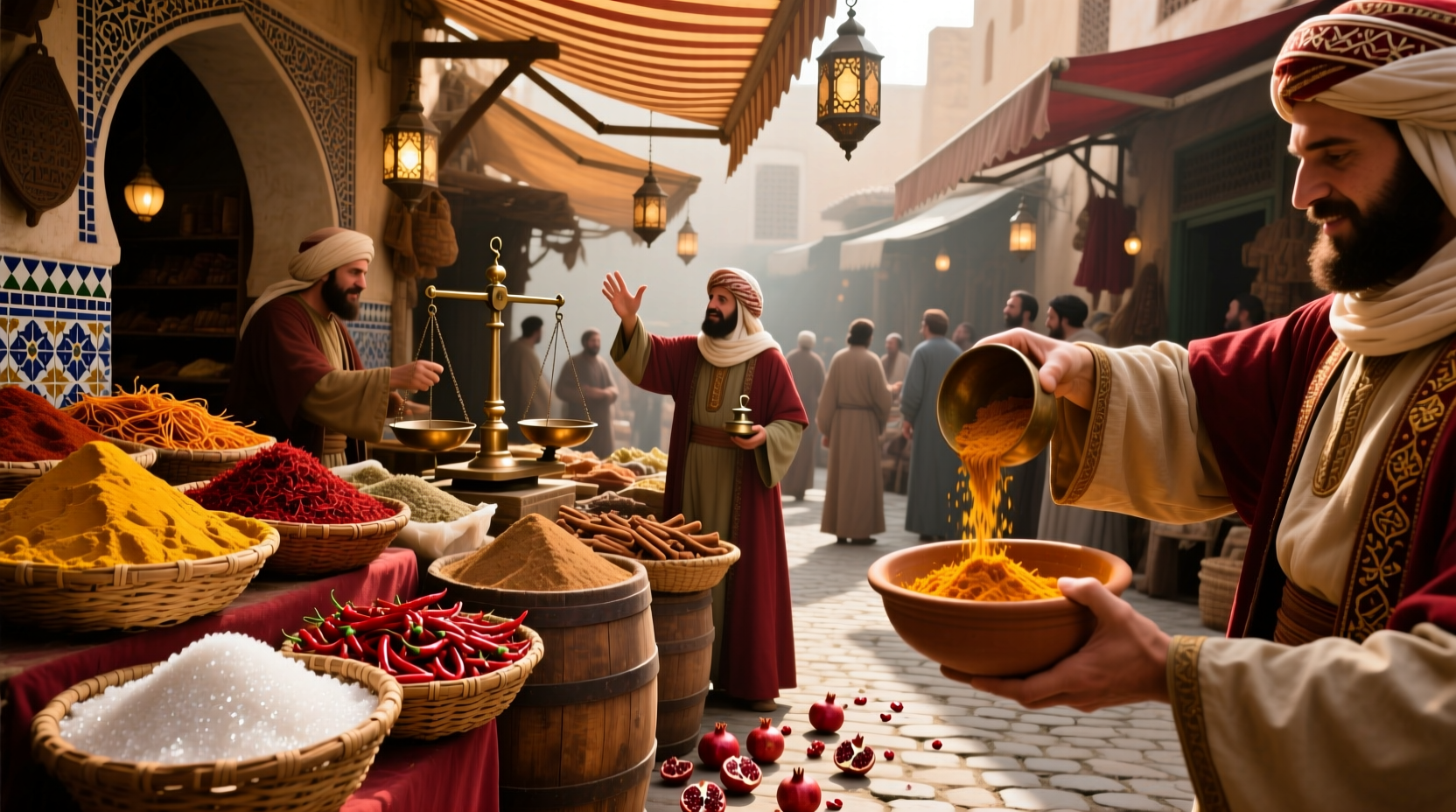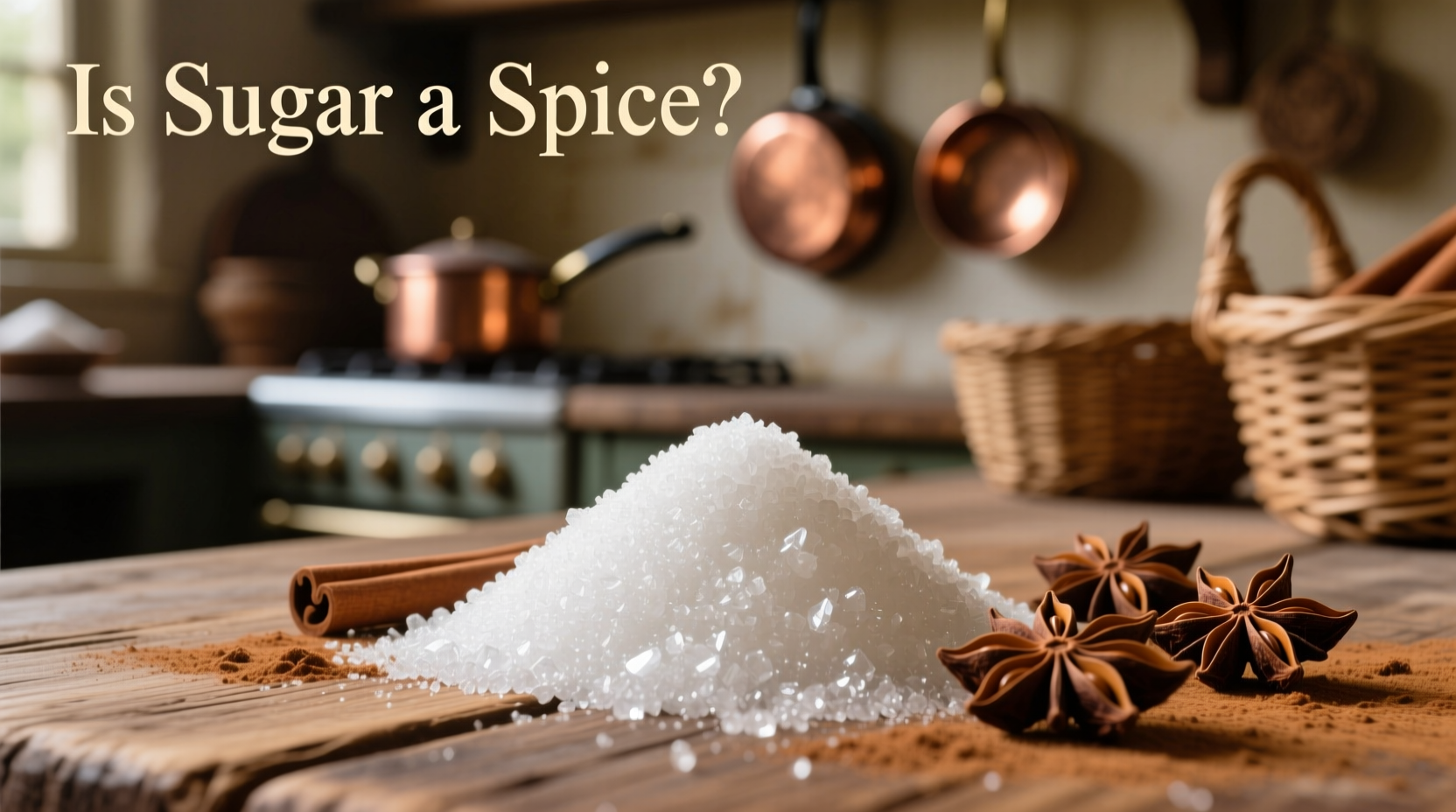For centuries, home cooks and culinary professionals have debated whether sugar belongs in the spice category. This confusion stems from historical trading practices where sugar appeared alongside true spices like cinnamon and pepper in merchant inventories. Understanding the distinction matters for recipe accuracy, cultural appreciation of ingredients, and proper culinary technique application.
What Actually Defines a Spice?
According to the American Spice Trade Association, spices are "any dried plant product used primarily for seasoning purposes." This definition specifically includes:
- Dried seeds (cumin, mustard)
- Dried fruits or pods (allspice, chili peppers)
- Dried bark (cinnamon)
- Dried roots (ginger, turmeric)
- Dried flower buds (cloves)
Sugar fails this botanical classification test. Produced through extraction and refinement of sugarcane stalks or sugar beet roots, sugar represents a concentrated carbohydrate rather than a specific plant structure. The Food and Agriculture Organization of the United Nations classifies sugar under "sugar and sweeteners" rather than spices in their commodity categorization system.
| Characteristic | True Spices | Sugar |
|---|---|---|
| Botanical Origin | Specific plant parts (seeds, bark, roots) | Extracted juice from sugarcane/sugar beets |
| Primary Chemical Composition | Essential oils, alkaloids, resins | Sucrose (carbohydrate) |
| Culinary Function | Flavor enhancement, aroma | Sweetening, texture modification |
| Processing Method | Drying, grinding | Extraction, crystallization |
Historical Context: Why Sugar Was Once Considered a Spice
During the Middle Ages and Renaissance, European markets treated sugar as a spice due to shared characteristics:
- Both were imported through the same trade routes from Asia and the Middle East
- Both commanded high prices accessible only to wealthy households
- Both were stored in specialized containers called "spice boxes"
This historical classification appears in medieval cookbooks like The Forme of Cury (1390), where sugar appears alongside spices in recipes. The confusion persisted until the 18th century when sugar production expanded through Caribbean plantations, making it more affordable and distinguishing it from rare, expensive spices.

Modern Culinary Science Perspective
Contemporary food science makes clear distinctions between sugar and spices based on chemical properties and functional roles in cooking:
Spices function primarily through:
- Releasing volatile compounds when heated
- Interacting with taste receptors for pungency or warmth
- Providing complex flavor layers that develop during cooking
Sugar functions through:
- Caramelization at specific temperature thresholds
- Maillard reaction with proteins
- Texture modification through crystallization
- Preservation through osmotic pressure
While some spice blends incorporate sugar (like Chinese five-spice powder), this represents complementary usage rather than reclassification. The Institute of Food Technologists confirms that sugar serves as a functional ingredient with distinct chemical behavior from spice compounds.
Practical Implications for Home Cooking
Understanding this distinction helps cooks apply ingredients more effectively:
When substituting: Sugar cannot replace spices in recipes requiring specific flavor compounds. You can't substitute sugar for cinnamon in apple pie and expect similar results.
When storing: Sugar requires different storage conditions than ground spices. While spices lose potency when exposed to moisture, sugar clumps but maintains sweetness.
When balancing flavors: Professional chefs treat sugar as part of the sweet component in the flavor balance (sweet-sour-salty-bitter-umami), while spices contribute to aromatic complexity and heat profiles.
Common Misconceptions Clarified
"Brown sugar is a spice" - False. Brown sugar contains molasses, but remains a sweetener, not a spice.
"Maple sugar qualifies as a spice" - Incorrect. Though derived from tree sap like some spices, it's chemically identical to other sugars.
"Sugar substitutes like stevia are spices" - Not accurate. Stevia is a sweetener derived from a plant leaf, but functions as sugar replacement, not a spice.
Why This Classification Matters
Proper ingredient classification affects more than semantics. Food manufacturers must follow different labeling regulations for spices versus sweeteners. Culinary students learn distinct handling techniques for each category. Even kitchen organization benefits from separating sweeteners from spices based on their different storage requirements and usage patterns.
Frequently Asked Questions
Is sugar considered a spice in any culinary tradition?
No major culinary tradition classifies sugar as a spice. While historical European practices grouped them together due to trade similarities, all modern culinary systems distinguish sugar as a sweetener. Some traditional medicine systems like Ayurveda categorize sugar differently than spices, but not as a spice itself.
Why do some spice blends contain sugar?
Certain spice blends include small sugar amounts to balance flavors or aid in caramelization, but this doesn't reclassify sugar as a spice. Chinese five-spice powder sometimes contains sugar for this purpose, as does some garam masala. The sugar serves a functional role rather than contributing spice characteristics.
Can sugar be used like a spice in cooking?
Sugar serves different culinary functions than spices. While you can sprinkle sugar on foods as you would spices, it behaves chemically different during cooking. Spices release aromatic compounds when heated, while sugar undergoes caramelization. Professional chefs treat them as distinct ingredient categories requiring different application techniques.
Is there any scientific basis for calling sugar a spice?
No scientific classification system considers sugar a spice. Botanically, spices come from specific plant structures (seeds, bark, roots), while sugar is a refined carbohydrate. The American Chemical Society and food science organizations maintain clear distinctions between sweeteners and spices based on chemical composition and functional properties.











 浙公网安备
33010002000092号
浙公网安备
33010002000092号 浙B2-20120091-4
浙B2-20120091-4